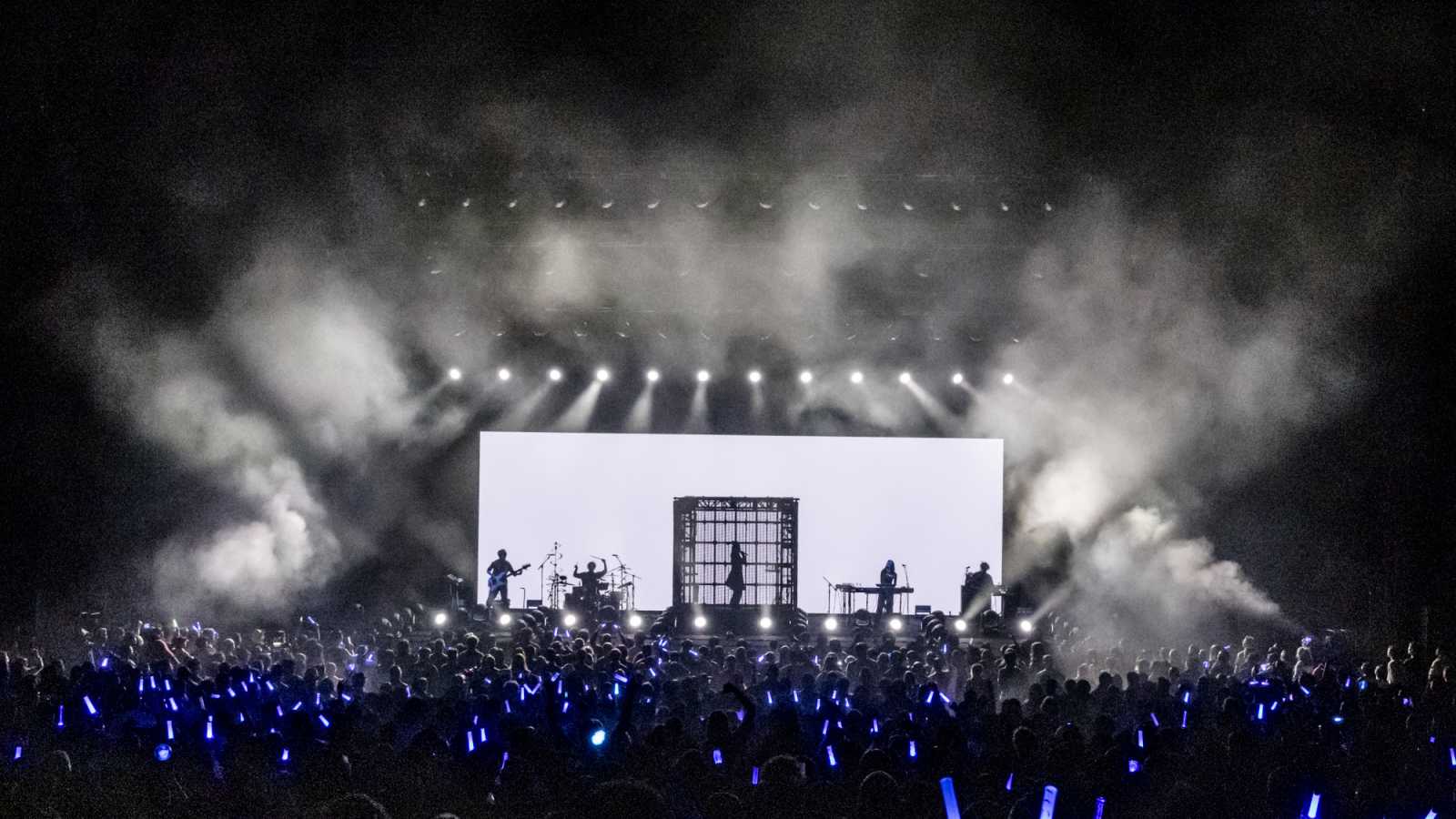D are best known for their "Vampire Saga", an epic tale of good, evil and human nature that began in ASAGI's and Ruiza's previous band Syndrome and has been serialised in "Mad Tea Party", the magazine that D self-publish. What is less well documented is their love of nature and concern for the protection of animals and the environment. Their new mini album, Namonaki mori no yumegatari, is dedicated to the beauty and magnificence of forests. It deals with a variety of issues, from the forest as a refuge and source of life to the destruction of the environment, and vocalist ASAGI, who as usual, wrote all the lyrics, spent two days alone in the woods to prepare for the task. How did D go about expressing these complex ideas in their music?
The album opens with Hikari no niwa, a short, delicate intro with acoustic guitar and plain, almost naive sounding vocals that reflect the peace and child-like wonder felt in nature. In the PV, which is included in the Limited Edition Type A of the album, this is personified by a horned ASAGI walking barefoot between the trees, a wreath of flowers in his hand, unaware of the alcohol swilling huntsman who pursues him and carelessly litters the forest floor with a burning cigarette. Ruiza really shines here as the graceful guitar chords highlight his versatility.
The introspective atmosphere of the intro carries over into the title track, Namonaki mori no yumegatari, but is cut short by a rifle shot as ASAGI is killed by the hunter, setting off a storm of heavy guitar and bass, galloping drums and angry chanting as nature in the shape of D moves in to take revenge. Clear vocals alternate with death voice and tribal shouting before building up to an emotional chorus that is carried along by fast percussion and a darkly, throbbing bass line. After a sparkling guitar solo, heavy riffing and death voice return, finally ending in an explosion of cymbals.
Canis lupus sets a playful electronic melody against distorted guitars and deep operatic vocals that climb to a high falsetto. Powerful bass and percussion join in and march towards a soaring chorus, then give way to a bridge of gentle strings and synth, only to return in an onslaught of screaming riffs and background shouts. Ruiza's guitar flares up in an extensive solo, then the ebb and flow continues until all elements unite in an epic finale. ASAGI's voice is particularly strong here and the wolf howling in the distance adds an eccentric touch.
His performance in Shirarezu kodomotachi is just as impressive. The song opens with delicate electric guitar chords and sweetly yearning strings. Then ASAGI's deep baritone sets in and, supported by piano and percussion, rises higher and higher until it almost breaks with emotion. As Ruiza's and HIDE-ZOU's guitars and Tsunehito's bass add their voices to the mix, the song tips over into a passionate power ballad that tells a tale of children lost in the woods.
Now heavy rock and metal return with renewed force. Sankaku oyane to aware na koguma is an extraordinary composition even by D's standards, who have never been afraid of pushing the envelope. Death voice and tribal chanting are lead by what sounds like accordion in a frantic, tarantella-like dance. Guitar, bass and percussion join in and create pure, unadulterated folk metal that initially appears cheerful, but turns bitter as the lyrics describe the plight of circus animals and their yearning for freedom. After a melodic, furitsuke-inducing chorus Ruiza's and HIDE-ZOU's guitars suddenly speed off and, in lieu of a solo, weave erratic twin harmonies, while Tsunehito's intricate bass line and HIROKI's drums keep the folkloric rhythm going. Death voice gives way to another chorus, then guitar, bass and accordion wrap the song up with a final burst of folk metal.
Avant-garde mellows to classic rock, but the mood stays heavy and intense with Like a Black Cat ~Mujitsu no tsumi~, which describes a witch hunt from the victim's perspective. Mimicking his flight into the forest, powerful guitars, bone crunching bass, clear vocals and organ - an instrument associated with travelling preachers - race along in a driving rhythm that is only interrupted by a short guitar solo.
Haru to utage sees the atmosphere change again, from dark and menacing to light hearted and serene, as folkloric elements return in a graceful dance of flute, bells and lush synthesizer. Guitars and bass add warmth and weight, but always keep in step with the choreography, and even the solo seems to be a variation on the dance motif. ASAGI hits an impressive falsetto, but the entire last minute of the song belongs to flute and synth as they continue to weave their sweet melody.
D have saved the best not only for last, but exclusively for the Regular Edition of the mini album. Zou to hito to ari to... sees Ruiza swap his guitar for an electric sitar for the first time since Colosseo, creating an exotic, world-music-inspired atmosphere. Clear vocals give way to swirling ethnic harmonies, rhythmic clapping, bells and operatic chanting, then guitar, bass and percussion settle in and ASAGI's powerful tremolo soars above the thick wall of sound like a call to prayer. As the listener is swept away by the folkloric vibe, a breathy electronic rhythm cuts in, creating an interesting contrast to the otherwise warm, organic feel of the song. Vocals, sitar, bass and percussion interlace in an increasingly frantic dance until they come to a sudden halt with a crash of cymbals. Sadly, at only 2 minutes and 27 seconds Zou to hito to ari to... is by far the shortest track on the CD, aside from Hikari no niwa. This astonishing creation should have been at least twice as long.
Finally, Namonaki mori no yumegatari (Voiceless) provides a welcome opportunity to inspect the instrumental side of the title track more closely.
D have risen to the challenge of exploring the relationship between humans and nature with the skill and sense of style that is the hallmark of their work. Namonaki mori no yumegatari is a stunningly beautiful story book that cleverly uses folklore to express a closeness to nature that is being lost in our modern industrialised world. As with Huang di ~Yami ni umareta mukui~ and their other folkloric works, they show an uncanny ability to blend traditional instruments and rhythms with their heavy modern guitar rock, constantly finding new ways of combining the different sounds and musical styles.
The esoteric vibe of the music is also reflected in the artwork, which shows two deer in the sunset, surrounded by fairy lights, trees, a low hanging moon, roses, butterflies and other animals. The deer's black and white fur and their opposing position on the CD cover, as well as the black and white curve design on the CD itself and on the back of the enclosed trading card, seem to hint not only at the contrast of light and dark, as shown in the mystical PV, but also the concept of Yin-Yang - two poles of existence, which are opposites yet complementary.
Philosophical considerations aside, the mini album provides 30 generous minutes of listening pleasure and should appeal to a wide audience; folk and pagan metal enthusiasts will find plenty to headbang and tap their feet to, while fans of classic rock will enjoy the more straight forward moments. Whatever your poison, this is a serious contender for album of the year.




